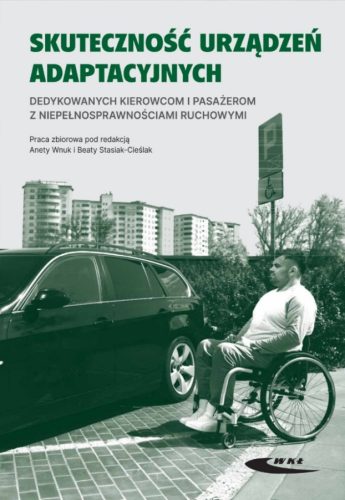Blog
Automated and autonomous mobility and the needs of people with disabilities
The ability to move is one of the most important human needs. In relation to people with disabilities, both drivers and passengers, reducing the level of involvement of other people in the implementation of transport allows for building a sense of freedom, independence and self-reliance in the scope of movement.
Despite actions aimed at improving the mobility of people with physical and mental disabilities, transport, which should be easily accessible, is still a barrier for many people that makes everyday functioning difficult.
Meeting the transport needs of people with various types of disabilities is a challenge for manufacturers, because it requires adapting the vehicle to specific needs, in particular in terms of facilitating entry and exit and operation of vehicle control devices.
People with disabilities, even if they do not drive a vehicle, need appropriate adaptations to enable them to travel. Manufacturers of automated and autonomous vehicles can have a real impact on the comfort of life of people with disabilities by taking into account their needs already at the design and production stage of vehicles (facilities related to entering/exiting and positioning a wheelchair in the vehicle, ensuring easy access to door handles, safety devices and storage compartments, voice control, assistive technologies for the visually impaired or blind).
Nevertheless, the automated systems and functions currently used in vehicles can prove very helpful for people with some types of disabilities, even without the need for prior, additional adaptation of the vehicle. An example is the parking assistant, a convenience that makes it easier to use the vehicle, especially for the group of people with motor dysfunctions in the torso area. Automatic control functions such as adaptive cruise control (ACC) can support long-distance travel for most people from all disability groups, because they relieve the driver of the constant use of arms and legs.
The use of partial automation (level 3 according to SAE), for example, in conditions typical of urban traffic, is a convenience for a group of people whose limb movements cause pain or increase the feeling of fatigue. On the other hand, the need to maintain concentration and readiness to take control of the vehicle may be more mentally taxing than continuous driving.
In the case of higher levels of automation (level 4 according to SAE), taking over the functions by the vehicle brings benefits consisting in the possibility of physical and mental rest for the driver, who does not have to be constantly vigilant. With level 5 of automation according to SAE, there is no driver in the vehicle, the mobility of people with disabilities can be ensured to a full extent.
Vehicles with a high level of automation, in which the presence of a driver is not required, will enable the passage of a person or group of people with various types of disabilities (blind, visually impaired, mobility or intellectually disabled people), which may contribute to reducing social exclusion and improving the independent functioning of such people. Depending on the classification of vehicle automation levels, there are different solutions that facilitate mobility for people with disabilities and their usefulness in facilitating mobility for the aforementioned group of users.
Equipping vehicles with automated functions improves road safety, and the use of solutions aimed at the needs of people with various types of disabilities will also increase the functionality and comfort of vehicle use, so that vehicles can be adapted to the needs and useful for a larger number of users.
Automated driving systems in vehicles and autonomous vehicles can contribute to improving the fulfillment of needs related to the free movement of people with various types of disabilities. However, this requires the implementation of innovative solutions in vehicles, in particular those that will cause the least possible concerns related to their use.
***
We encourage you to read the publication entitled “Effectiveness of adaptive devices dedicated to drivers and passengers with mobility disabilities”, which describes solutions facilitating the mobility of people with movement disorders, including issues of future use of solutions offered by autonomous mobility.
The publication is available free of charge on the portal of the Polish Road Safety Observatory ITS (POBR)
Source:
Economic impacts of removing transportation barriers to employment for individuals with disabilities through autonomous vehicle adoption, National Disability Institute, December 2022.
Kamińska E., The possibility of using automated vehicles to provide support for disabled people in individual transport, Gospodarka Materialowa i Logistyka, No. 2/2021.
Effectiveness of adaptive devices dedicated to drivers and passengers with mobility disabilities, Collective work edited by Aneta Wnuk and Beata Stasiak-Cieslak, Wydawnictwa Komunikacji i Łączności, 2024.
Stasiak-Cieślak B., Szczepański T., Ślęzak M., Skarbek-Żabkin A., Malawko P., Autonomous vehicles as a facilitation of mobility for drivers with disabilities, Disability – issues, problems, solutions, No. II/2018 (27).


